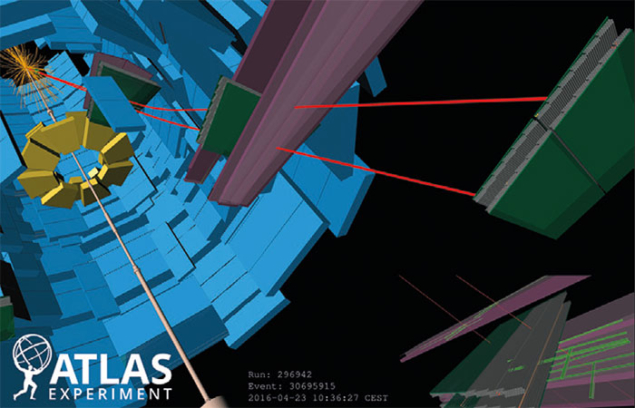
Image credit: CERN.
At the beginning of May, the LHC declared the start of a new physics season for its experiments. The “Stable Beams” visible on the LHC Page 1 screen (see image above) is the “go ahead” for all the experiments to start taking data for physics.

Image credit: CMS Collaboration.
Since 25 March, when the LHC was switched back on after its winter break, the accelerator complex and experiments have been fine-tuned using low-intensity beams and pilot proton collisions, and now the LHC and the experiments are taking an abundance of data.

Image credit: ATLAS Collaboration.
The short circuit that occurred at the end of April, caused by a small beech marten that had found its way onto a large, open-air electrical transformer situated above ground, resulted in a delay of only a few days in the LHC running schedule. The relevant part of the LHC stopped immediately and safely after the short circuit, and the entire machine remained in standby mode for a few days.

Image credit: ALICE Collaboration.
Now, the four largest LHC experiment collaborations, ALICE, ATLAS, CMS and LHCb, have started to collect and analyse the 2016 data (see images above). Last year, operators increased the number of proton bunches to 2244 per beam, spaced at intervals of 25 ns. These enabled the ATLAS and CMS collaborations to study data from about 400 million million proton–proton collisions. In 2016, operators will increase the number of particles circulating in the machine and the squeezing of the beams in the collision regions. The LHC will generate up to one-billion collisions per second in the experiments.

Image credit: LHCb Collaboration.
The physics run with protons will last six months. The machine will then be set up for a four-week run colliding protons with lead ions.





